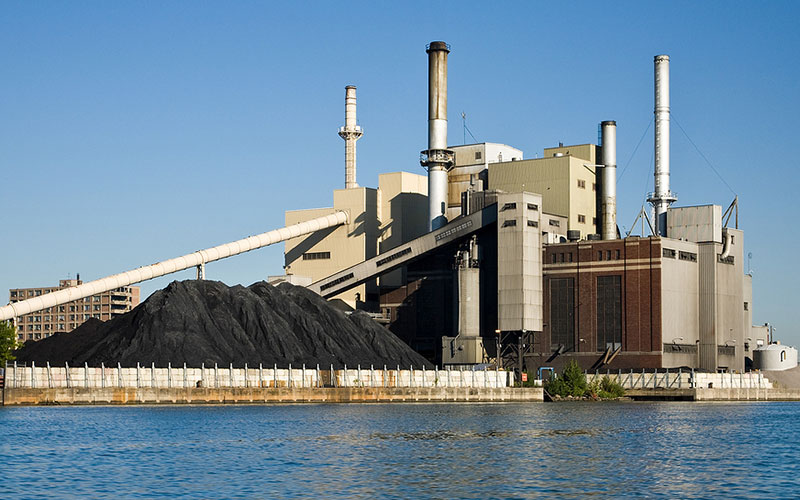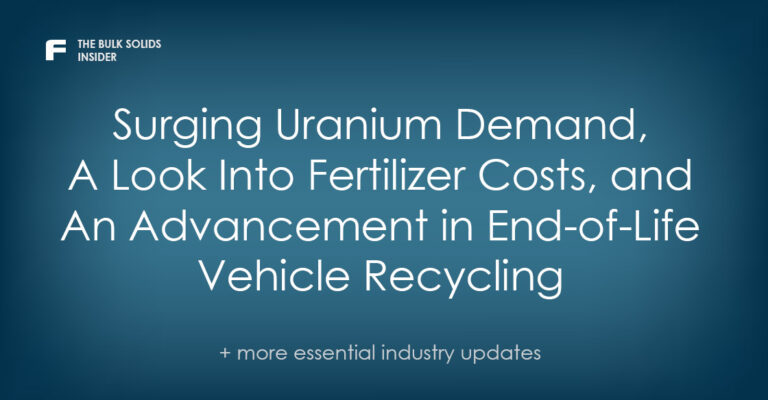Updates in Mining

Uranium Demand to Surge
A new report from the World Nuclear Association says demand for uranium used in nuclear reactors could surge by nearly 30% by 2030. According to Reuters, the report notes that given that new mines can take anywhere from 10 to 20 years to reach production, the world will need to accelerate the development of projects. Interest in nuclear power continues to rise as governments look to meet climate change goals and switch to clean, stable energy sources.

Canada PM Announces First MPO Projects
Canadian Prime Minister Mark Carney has announced the first selection of projects that will fall under the newly launched Major Projects Office (MPO). The effort is similar to the United States’ FAST-41 initiative, in which projects are selected for improved transparency in an effort to streamline regulatory approval for critical projects.

Trump Gives Coal A Boost
The Trump administration announced it intends to open 13 million acres of federal lands to coal mining and provide $625 million for revitalizing coal plants, according to The Associated Press. The move is part of a broader effort to increase domestic energy production, in which coal will be essential.

Australia Willing to Deal on Critical Minerals
In a move aimed at reducing dependence on China for rare earths and other critical minerals, Australia has proposed selling shares in its new strategic reserve of critical minerals to allied countries, according to Reuters. While nothing is finalized yet, talks are underway. If realized, the arrangement could provide benefits to participating allies and bolster Australia’s role in global mineral markets.
Updates in Fertilizer

Lawmakers Call for Transparency on Fertilizer Market
Senators Chuck Grassley of Iowa, Tammy Baldwin of Wisconsin, and Joni Ernst of Iowa have reintroduced the Fertilizer Research Act, which would direct the U.S. Department of Agriculture (USDA) to study fertilizer markets and issue a public report within one year. The study would examine not only pricing, but also factors such as market concentration, trade policies, and import reliance. Rising fertilizer costs—estimated to represent more than a third of some farmers’ operating expenses—have become a major challenge for U.S. growers, and lawmakers hope the legislation will reveal the causes behind these increases. Read more from Fertilizer Daily >>

U.S. Potash Project Receives US$14 Million Grant
Canadian-based Sage Potash has announced its approval of a US$14 million grant from the USDA for the firm’s flagstone project in Utah. The Sage Potash project will boost domestic production of key mineral potash while bringing around 100 jobs to San Juan County.
Updates in Chemical

UP NS Rail Merger Worries Chemical Industry
The American Chemistry Council (ACC) is concerned over how the proposed Union Pacific and Norfolk Southern merger could affect domestic chemical production. In a statement, ACC President and CEO said: “History has shown that mergers slash service and shift costs onto customers – and the UP–NS merger risks more of the same. President Trump has made real progress rebuilding American manufacturing. Let’s not let a monopoly undo it. We need a better deal—one that enhances competition between railroads, lowers costs, grows jobs, and strengthens America.”

Circular End-of-Life Vehicle Recycling Closer to Reality
Porsche AG, BASF SE, and BEST (Bioenergy and Sustainable Technologies GmbH) have completed a pilot project showing that complex automotive shredder residues (plastics, foams, films, paint residues) can be recycled using gasification (a form of chemical recycling). The process converts the mixed waste — in combination with biomass feedstocks — into synthesis gas and downstream intermediates, which BASF then integrates into its value chain, enabling the recycled material to be used in automotive components like steering wheels. The pilot thus demonstrates a feasible technical route to return difficult-to-recycle vehicle waste to the automotive supply chain. Read more from Chemical Engineering >>
Like what you’re reading? Subscribe to our blog for industry updates and expert advice on bulk solids processing and handling.


